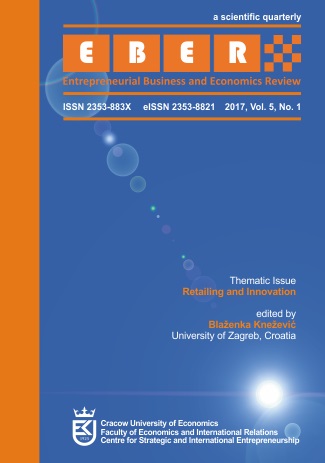Internationalisation and Innovation Intensities of Polish Manufacturing Firms: A Close Nexus?
Internationalisation and Innovation Intensities of Polish Manufacturing Firms: A Close Nexus?
Author(s): Tomasz BrodzickiSubject(s): Economy
Published by: Uniwersytet Ekonomiczny w Krakowie
Keywords: innovation intensity; Internationalisation intensity; firms heterogeneity; logit model; Poland
Summary/Abstract: Objective: The paper aims at the empirical identification of the nexus between innovation and internationalisation intensities in a sample of Polish manufacturing companies. Research Design & Methods: Using a unique dataset combining micro-level financial data from Info Credit and results from an extensive survey we follow the approach of Altomonte, Aquilante, Ottaviano & Bekes (2013). We define innovation and internationalisation intensities and analyse the two dimensions disjointly and then simultaneously use formal econometric tools. Findings: Both dimensions are closely and robustly correlated. There is some evidence for the causality going from innovation to internationalisation. Polish manufacturing companies have in general low innovation and internationalisation intensity. Rising innovation intensity allows companies to become more internationalised and in particular, it raises their probability of exporting. Mean characteristics of firms, such as employment, sales or productivity, change along the two examined dimensions. Implications & Recommendations: Our results firmly support the postulates of the heterogeneous firms’ trade theory. The results strongly support the introduction of a new type of economic policy in which internationalisation promotion and innovation promotion are simultaneously targeted at the level of a firm. Contribution & Value Added: We extensively analyse innovation and internationalisation intensities for manufacturing firms from Poland. Using a logit model we show their impact on the likelihood of exporting. We furthermore apply the classification of exporting firms along temporal and geographical dimensions identifying main features and links to the key dimensions.
Journal: Entrepreneurial Business and Economics Review
- Issue Year: 5/2017
- Issue No: 1
- Page Range: 91-109
- Page Count: 19
- Language: English

